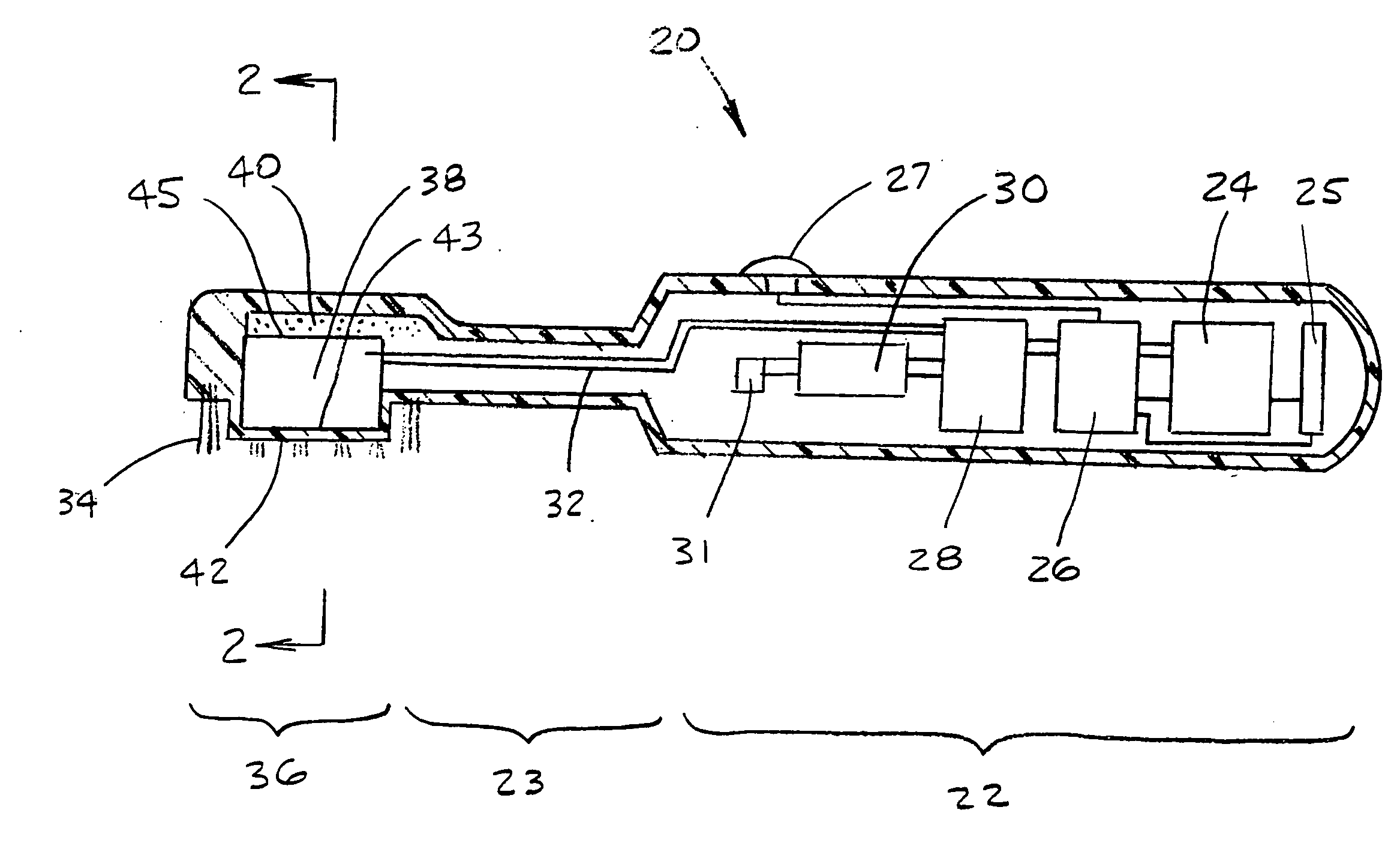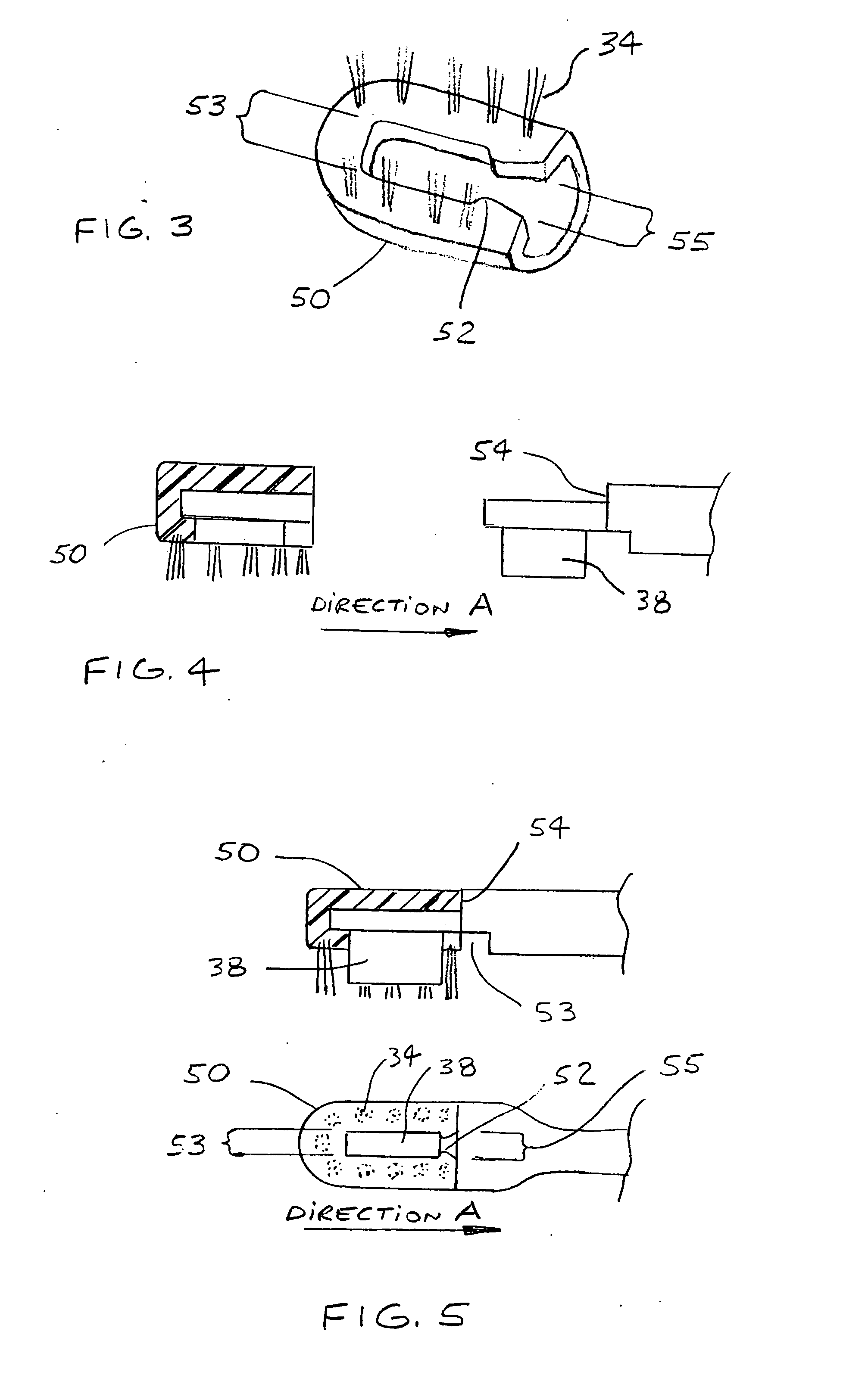Extended reach ultrasonic toothbrush with improvements
a technology of ultrasonic toothbrushes and extension reach, which is applied in the field of ultrasonic toothbrushes, can solve the problems of reducing the efficiency of the ultrasonic wave emitted by the transducer, not providing the ultimate performance, and not generating or transmitting ultrasonic energy to the teeth and gums, and achieves a high-efficiency ultrasonic, prolongs the reach of ultrasonic waves, and minimizes the attenuation of the ultrasonic wave between
- Summary
- Abstract
- Description
- Claims
- Application Information
AI Technical Summary
Benefits of technology
Problems solved by technology
Method used
Image
Examples
Embodiment Construction
[0024]Description of the Basic Device.
[0025]Referring in detail to the drawings, the reference numerals herein refer to the like numbered parts in the drawings. In the following discussion, unless otherwise qualified, the term “ultrasound” refers to acoustic energy in either continuous wave ultrasound or a repetitive burst type ultrasonic modality, having a frequency higher than 20 kHz. When reference is made to “sonic” or “sonic vibrations”, unless otherwise qualified, it is a reference to a vibrating or oscillating motion below 20 kHz frequency. The term “cavitation” in association with the ultrasonic toothbrush refers to the generation, activation, or bursting of bubbles in the fluids in the oral cavity. The reference to “fluids in the oral cavity”, unless otherwise qualified, is typically a mixture of saliva, water and dentifrice. “Acoustic streaming” refers to a flow of fluids driven by an acoustic wave emitted by the ultrasonic transducer. When reference is made to “ultrasound...
PUM
 Login to View More
Login to View More Abstract
Description
Claims
Application Information
 Login to View More
Login to View More - R&D
- Intellectual Property
- Life Sciences
- Materials
- Tech Scout
- Unparalleled Data Quality
- Higher Quality Content
- 60% Fewer Hallucinations
Browse by: Latest US Patents, China's latest patents, Technical Efficacy Thesaurus, Application Domain, Technology Topic, Popular Technical Reports.
© 2025 PatSnap. All rights reserved.Legal|Privacy policy|Modern Slavery Act Transparency Statement|Sitemap|About US| Contact US: help@patsnap.com



